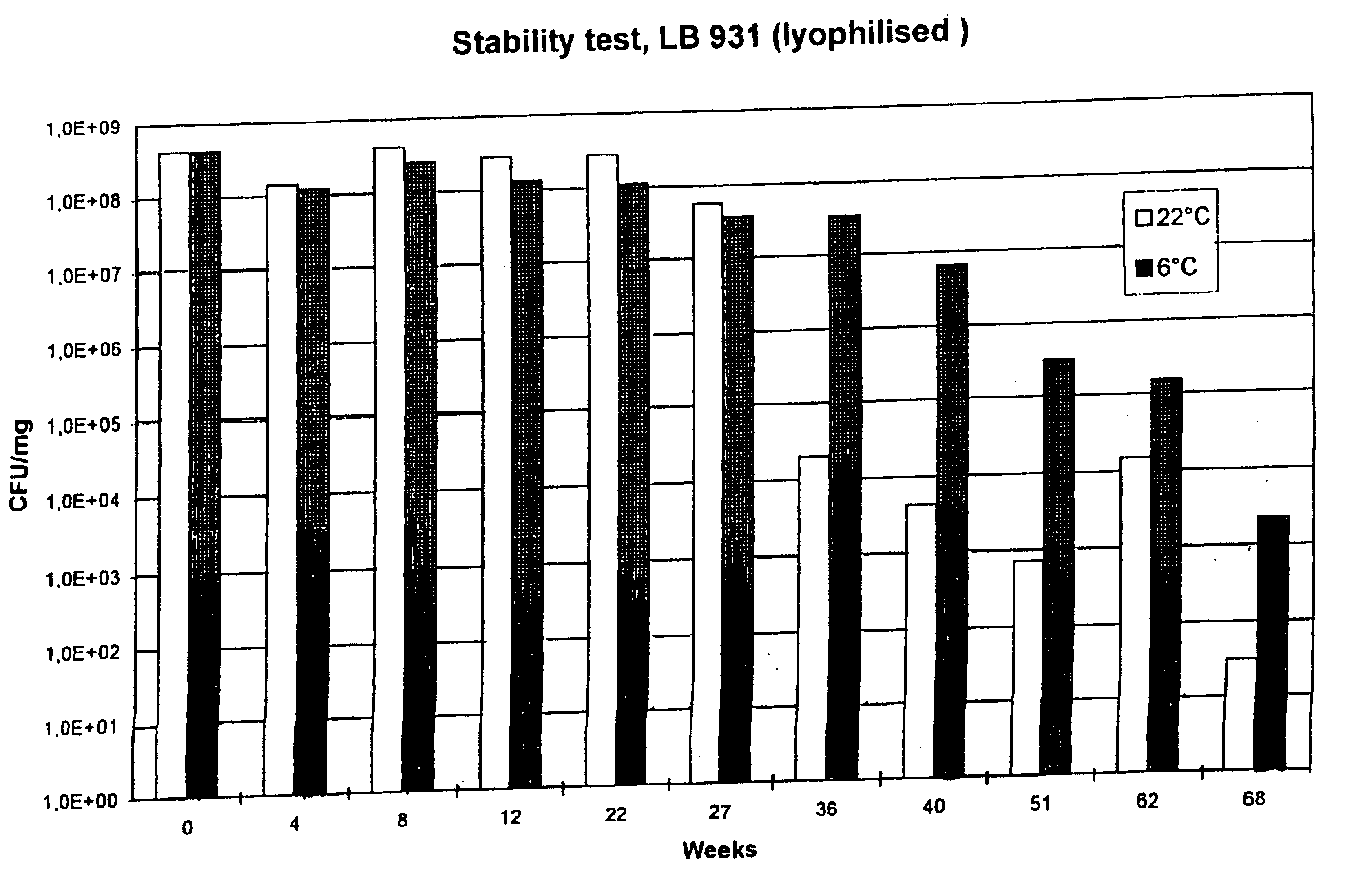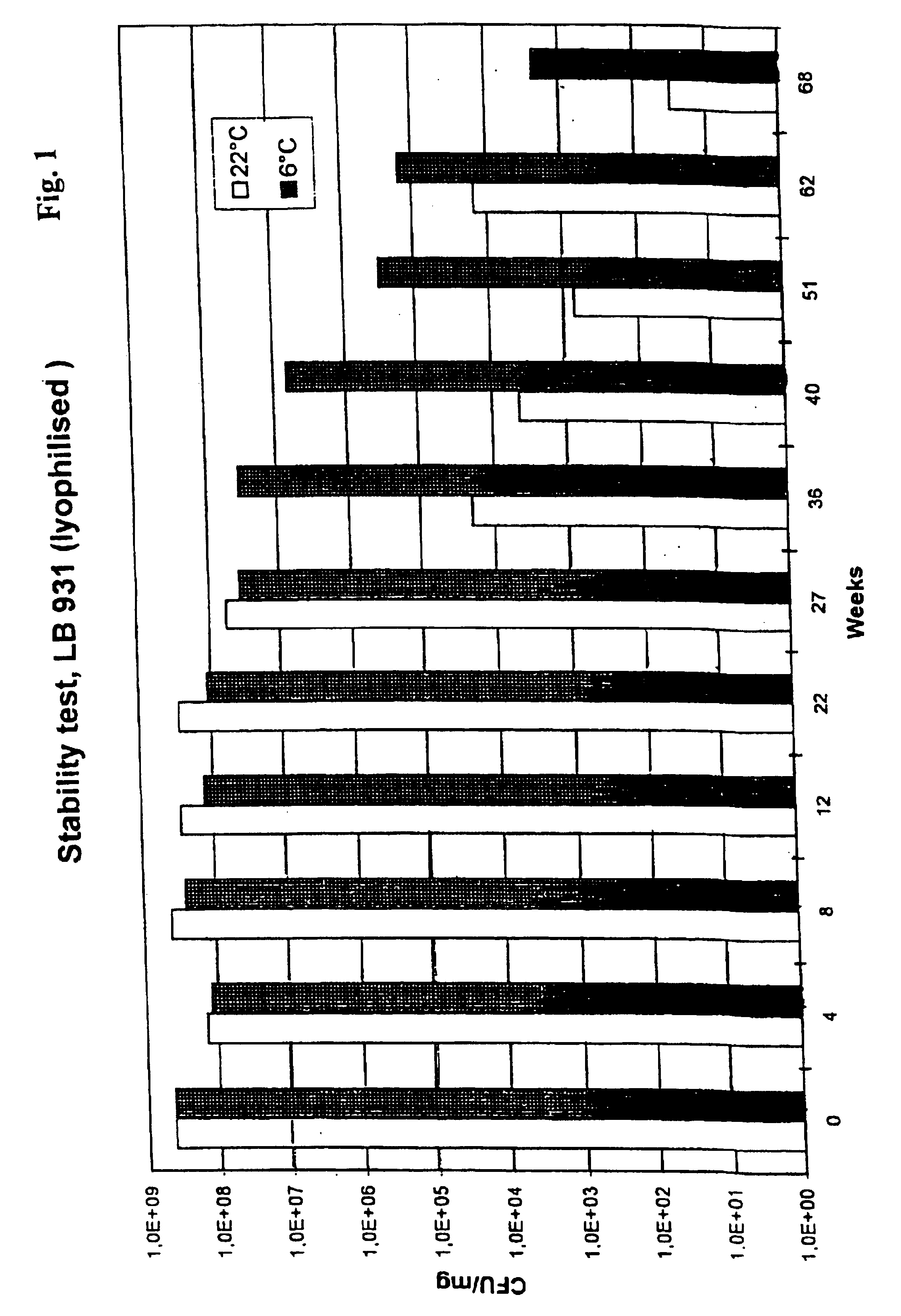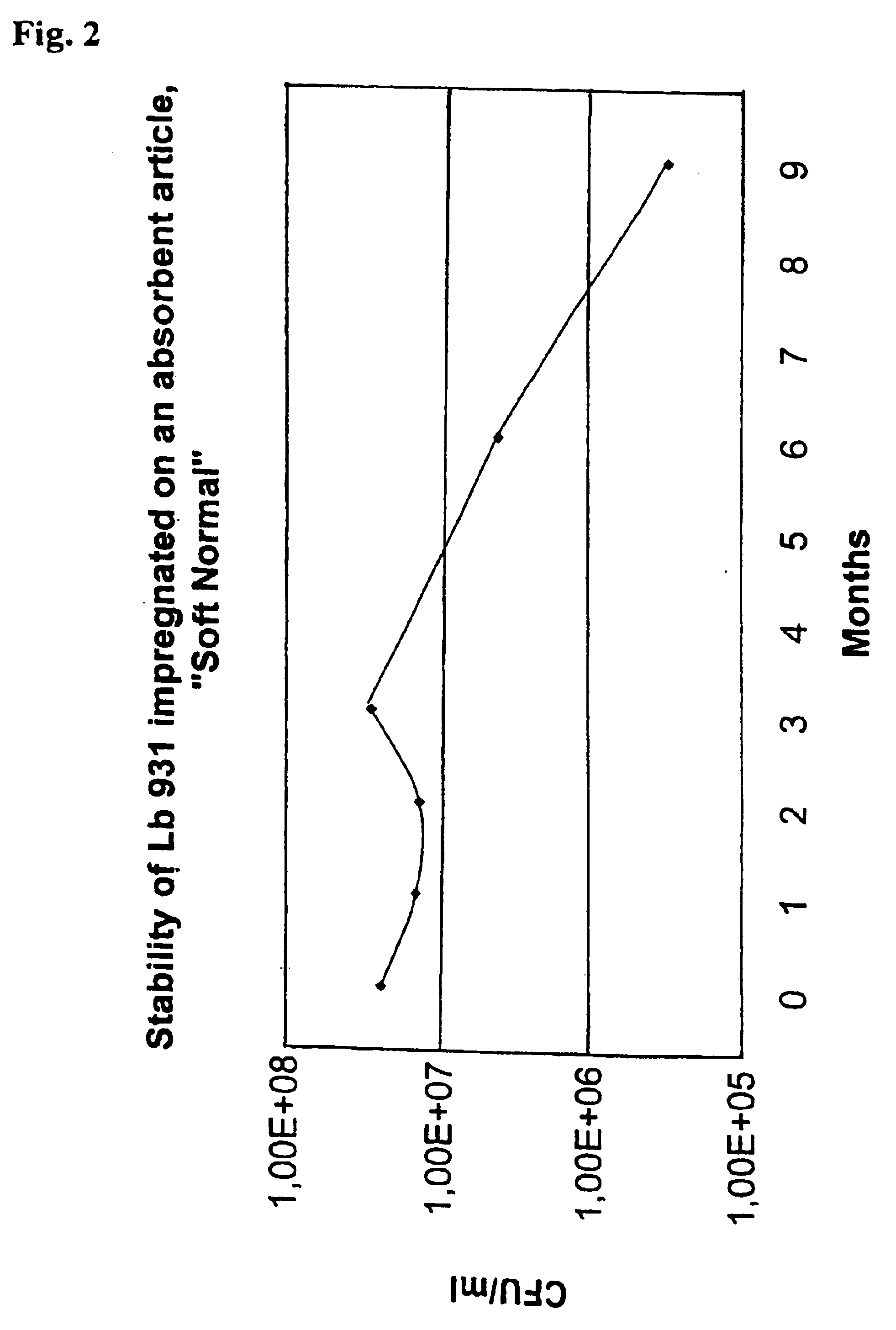Strain of Lactobacillus plantarum and uses thereof
a technology of lactobacillus and plantarum, which is applied in the direction of plant growth regulators, biochemical apparatus and processes, biocide, etc., can solve the problems of toxic hydrogen peroxide and serious infections in new-born children
- Summary
- Abstract
- Description
- Claims
- Application Information
AI Technical Summary
Problems solved by technology
Method used
Image
Examples
example 2
Inhibition Capacity of Strain LB931
The purpose of this experiment was till illustrate the ability of strain LB931 to inhibit growth of other bacteria. LB931 was grown in MRS broth (Merck, DE) at a temperature of 37.degree. C. in 5% CO.sub.2 over night. One ml, containing 10.sup.8 bacteria was added to 25 ml of melted 2% agar in MRS-broth. The mixture was poured into the Petri dish, allowed to congeal and incubated as described above for 24 hours. Another 25 ml of M17-agar (Merck, DE) was poured on top of the first layer and the plates were left at room temperature for 4 hours. Similar agar plates without LB931 were also made and used as control plates.
The indicator bacteria were cultured separately in TY-medium (Holm et al., APMIS 1967; 69, 264) at 37.degree. C. in air. The cultures were transferred to a 25 compartment Bertani tray, each compartment holding 0.25 ml (10.sup.6 bacteria / ml). From each of these trays the bacteria were transferred and stamped onto the agar plates contain...
example 3
The Survival Capabilities of LB931 in Different Preparations
a) LB931 dissolved in a suspension of equal parts skim milk and 0.9% NaCl
LB931 was dissolved in skim milk containing 0.9% NaCl. The dissolved bacteria was then incubated at different temperatures. The amount of bacteria was continuously monitored by cell counting. The results are disclosed in table II below.
The results show that LB931 is stable in a mixture of skim milk and NaCl for a period of one month at +4.degree. C.
b) A skim milk preparation of LB931 was freeze-dried according to standard methods. The obtained powder was stored in Petri dishes at room temperature and at +6.degree. C. The number of bacteria was determined after 7 days and 25 days, respectively. The results are disclosed in table III below.
The number of bacteria in the freeze-dried powder was also monitored every fourth week up to 68 weeks. These results are presented in FIG. 1. It is evident from the figure that LB931 is stable both at room temperature ...
example 4
Transfer of LB931 to Perineum Skin and Urethral Orifice in Woman
In order to study transfer of LB931 to perineum when using a pantry liner, the following investigation was carried out. All test persons were women between 12 and 60 years of age, and the tests were carried out between menstrual periods when appropriate. Test products were manufactured from conventional panty liners comprising a liquid-permeable outer layer, a liquid-impermeable rear-side layer an in between an absorbent layer of 100-200 g / m.sup.2 of chemical cellulose pulp. On the absorbing side of the test product a suspension of LB931 bacteria was sprayed in an amount of 10.sup.9 colony-forming units a product.
In order to determine the presence of LB931 in perineum of the 13 test persons, a so called swab test was carried out. Bacteria were collected by rubbing a sterile stick comprising a cotton tip which has been immersed into sterile sodium chloride solution on to a defined skin area. The occurrence of LB931 and o...
PUM
 Login to View More
Login to View More Abstract
Description
Claims
Application Information
 Login to View More
Login to View More - R&D
- Intellectual Property
- Life Sciences
- Materials
- Tech Scout
- Unparalleled Data Quality
- Higher Quality Content
- 60% Fewer Hallucinations
Browse by: Latest US Patents, China's latest patents, Technical Efficacy Thesaurus, Application Domain, Technology Topic, Popular Technical Reports.
© 2025 PatSnap. All rights reserved.Legal|Privacy policy|Modern Slavery Act Transparency Statement|Sitemap|About US| Contact US: help@patsnap.com



